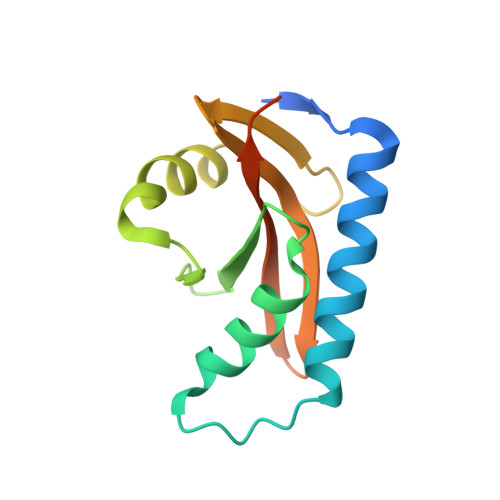The sensor of the bacterial histidine kinase CpxA is a novel dimer of extracytoplasmic Per-ARNT-Sim domains.
Cho, T.H.S., Murray, C., Malpica, R., Margain-Quevedo, R., Thede, G.L., Lu, J., Edwards, R.A., Glover, J.N.M., Raivio, T.L.(2024) J Biol Chem 300: 107265-107265
- PubMed: 38582452
- DOI: https://doi.org/10.1016/j.jbc.2024.107265
- Primary Citation of Related Structures:
8UK7 - PubMed Abstract:
Histidine kinases are key bacterial sensors that recognize diverse environmental stimuli. While mechanisms of phosphorylation and phosphotransfer by cytoplasmic kinase domains are relatively well-characterized, the ways in which extracytoplasmic sensor domains regulate activation remain mysterious. The Cpx envelope stress response is a conserved Gram-negative two-component system which is controlled by the sensor kinase CpxA. We report the structure of the Escherichia coli CpxA sensor domain (CpxA-SD) as a globular Per-ARNT-Sim (PAS)-like fold highly similar to that of Vibrio parahaemolyticus CpxA as determined by X-ray crystallography. Because sensor kinase dimerization is important for signaling, we used AlphaFold2 to model CpxA-SD in the context of its connected transmembrane domains, which yielded a novel dimer of PAS domains possessing a distinct dimer organization compared to previously characterized sensor domains. Gain of function cpxA∗ alleles map to the dimer interface, and mutation of other residues in this region also leads to constitutive activation. CpxA activation can be suppressed by mutations that restore inter-monomer interactions, suggesting that inhibitory interactions between CpxA-SD monomers are the major point of control for CpxA activation and signaling. Searching through hundreds of structural homologs revealed the sensor domain of Pseudomonas aeruginosa sensor kinase PfeS as the only PAS structure in the same novel dimer orientation as CpxA, suggesting that our dimer orientation may be utilized by other extracytoplasmic PAS domains. Overall, our findings provide insight into the diversity of the organization of PAS sensory domains and how they regulate sensor kinase activation.
Organizational Affiliation:
Departments of Biological Sciences, University of Alberta, Edmonton, Alberta, Canada.














